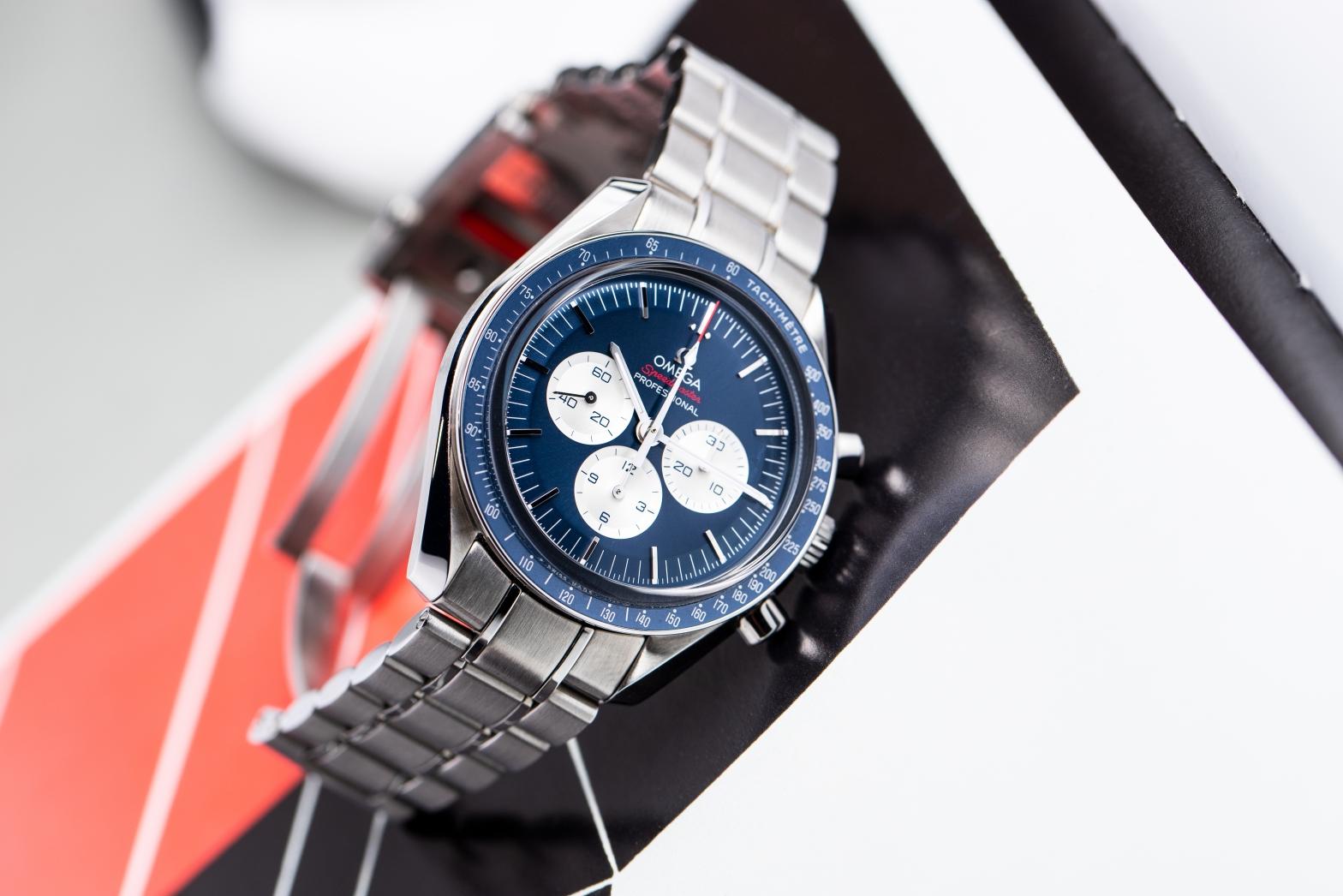
For 65 years, the Speedmaster has been ceaselessly favoured by watch collectors at-large – on the ground, in pop culture, and amongst the stars. We revisit a few decisive moments in its history to find out why
In the universe of ultra-iconic watches, more than a few have leaned into the allure of refinement and scarcity over the decades. If designs along the lines of Patek Philippe’s emblematic Nautilus or the various permutations of the Royal Oak are pieces that enthusiasts conceive of as watchmaking’s ‘holy grail’, then it’s only fair to cast the Speedmaster as horological culture’s immovable foundation.
Over the past six-and-a-half decades, this beloved tool watch has become one of the most decisively recognizable chronographs of the 20th century – the apotheosis of a functional design, rich historical heritage and accessibility at a wide array of different price points. It’s a watch that, in both vintage and contemporary guises, offers deep collecting opportunities: ranging from headline-making record breakers to consecutive, seemingly identical references – catnip to those who do indeed sweat the small stuff.
Point being, as a general rule, the Speedy template has something for everyone. That quality of unrivaled universality can best be exemplified by looking at three distinct eras within the Speedmaster legacy: an ongoing narrative that Omega remains committed to through development of new heritage-inspired models and support of global Speedmaster-collecting communities.
Terrestrial Beginnings
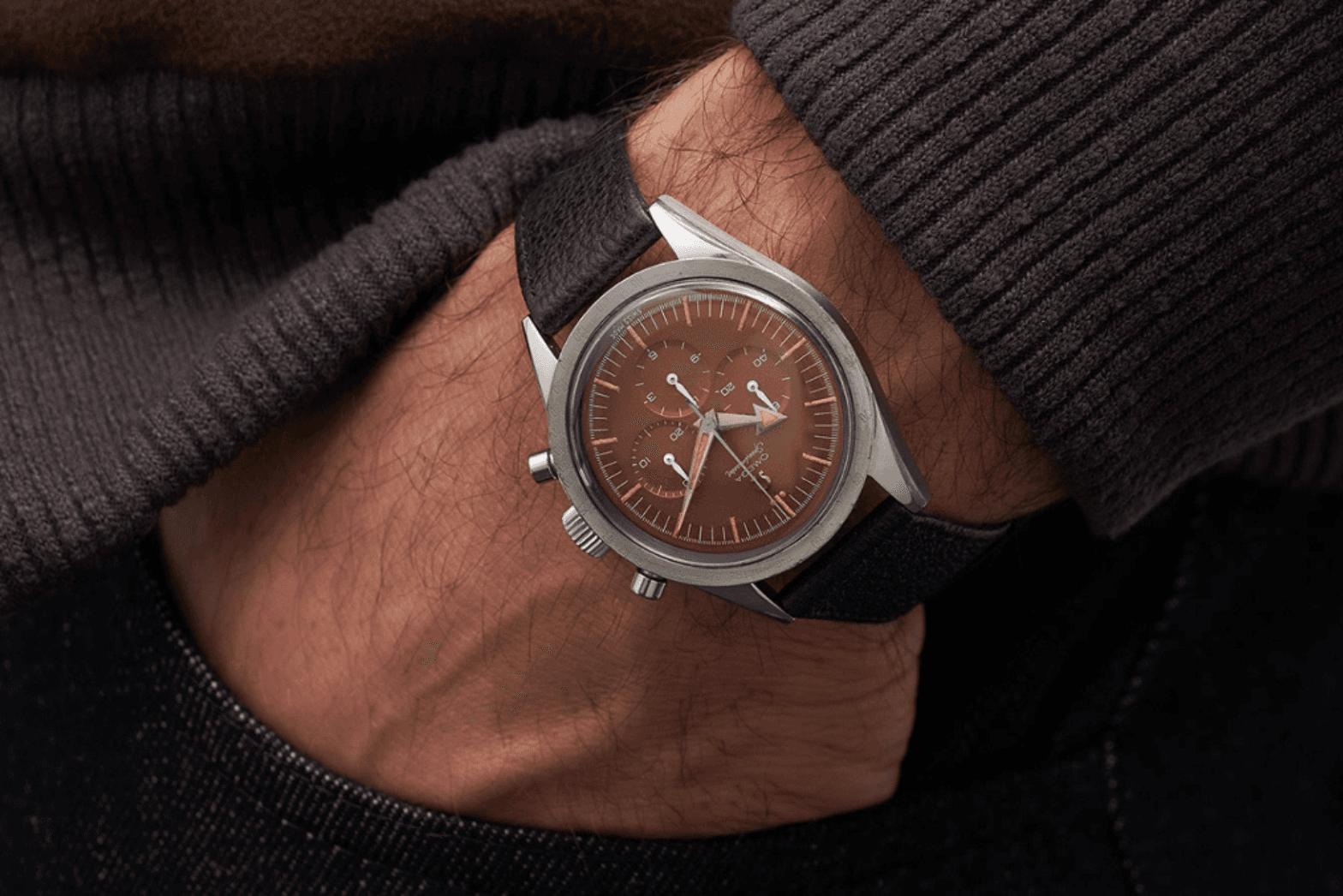
The Speedy’s popular mythos crystallized around its now-legendary association with American space exploration, however what is less well-known is that it initially began life as a racer’s watch. In 1957 – five and six years before the release of the Autavia and Daytona respectively – Omega unveiled the Ref. CK2915 – the first generation of what would eventually become the space-faring Speedmaster. In a fashion not dissimilar to how Omega advertises the standard-issue Speedmaster today, the original marketing for the CK2915 emphasized its computational bona fides: billed as the smart watch of its age, the first Speedies combined stopwatch functionality with multiple time-telling displays and a tachymeter – incorporated, in this case, as a notched design directly into the watch’s steel bezel. Importantly, these earliest incarnations of the Speedmaster lineage featured an hour hand in a distinctive arrow-headed shape – hence the ‘Broad Arrow’ nickname amongst collectors.
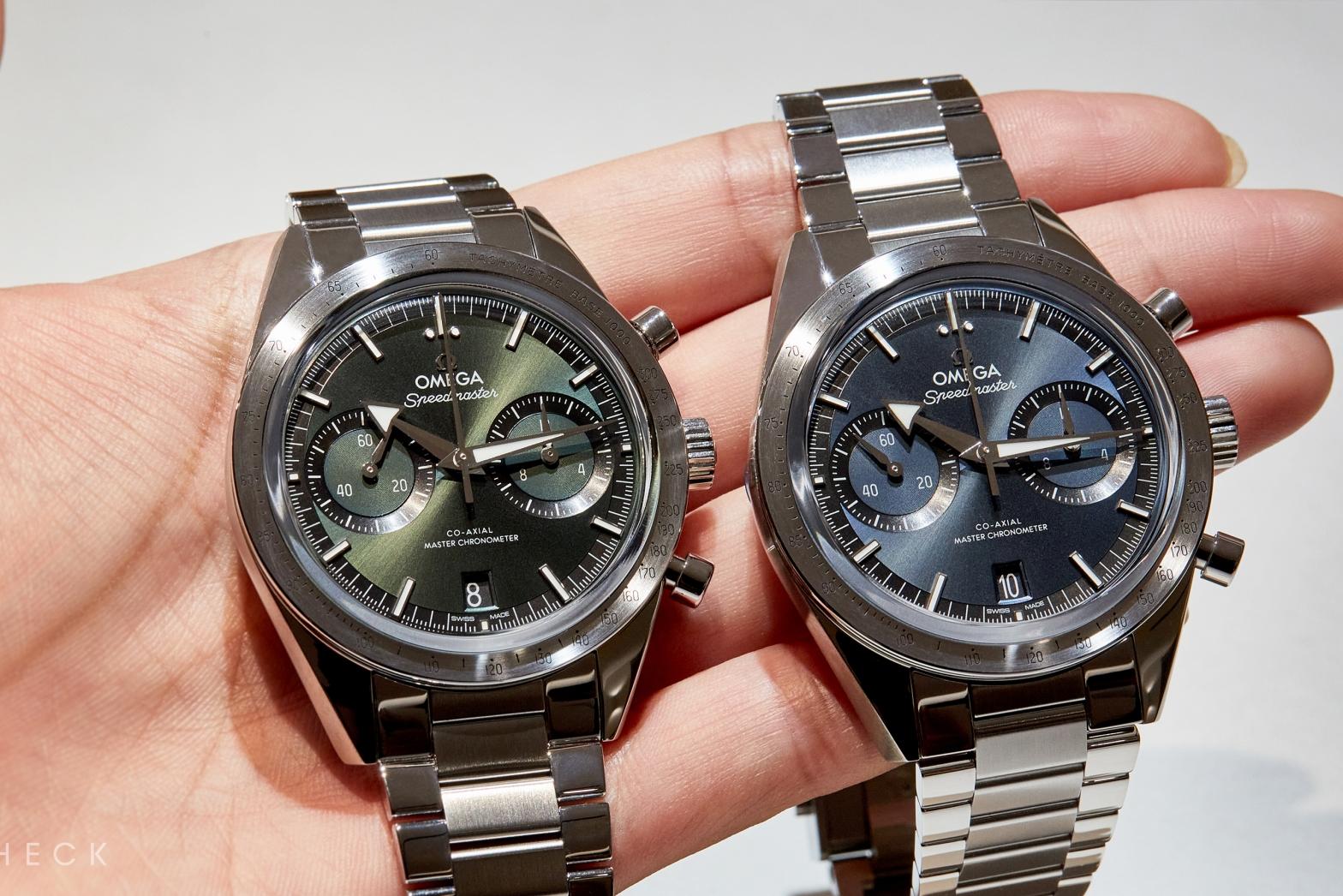
The longevity of the CK2915’s overarching design is such that even in 2022, it’s impossible to ignore the parallels between it and the modern Speedmaster Professional (give or take a bezel insert and few added lines of text on the dial). It’s also the subject of much fond nostalgia at Omega: where modern watchmakers have used the ‘Broad Arrow’ as a basis for the updated version of the Speedmaster ‘57 released in March of this year. The fact that that watch – a two-register, 38.5mm chronograph – looks every bit as good in the emergent era of Web 3.0 is a testament to the strength of the original Speedy’s design. Clearly, there was only a little room for improvement: most of which, unsurprisingly, is mechanical. The latest ‘57 Speedy incorporates a modern chronograph movement with Omega’s own chronometer certification (METAS). A host of technological improvements imbue it with superior accuracy and magnetic resistance to its spiritual forebear, but to Speedmaster ascetics, make for an underwhelming substitute to the period-correct Calibre 321. Described by Wei Koh, founder of The Rake and Revolution magazines, as “the single most storied movement” in mechanical watchmaking, the 321 was the engine of choice for Speedy references produced until 1968. Made in collaboration with Lemania, it has achieved near-mythological status among those who prize vertical clutch chronographs (so much so, that Omega even decided to resurrect the design in 2019). “The Calibre 321 is the Holy Grail of movements,” says Koh. “Simultaneously beautiful to behold and proven to be the most reliable and durable movement of its kind.”
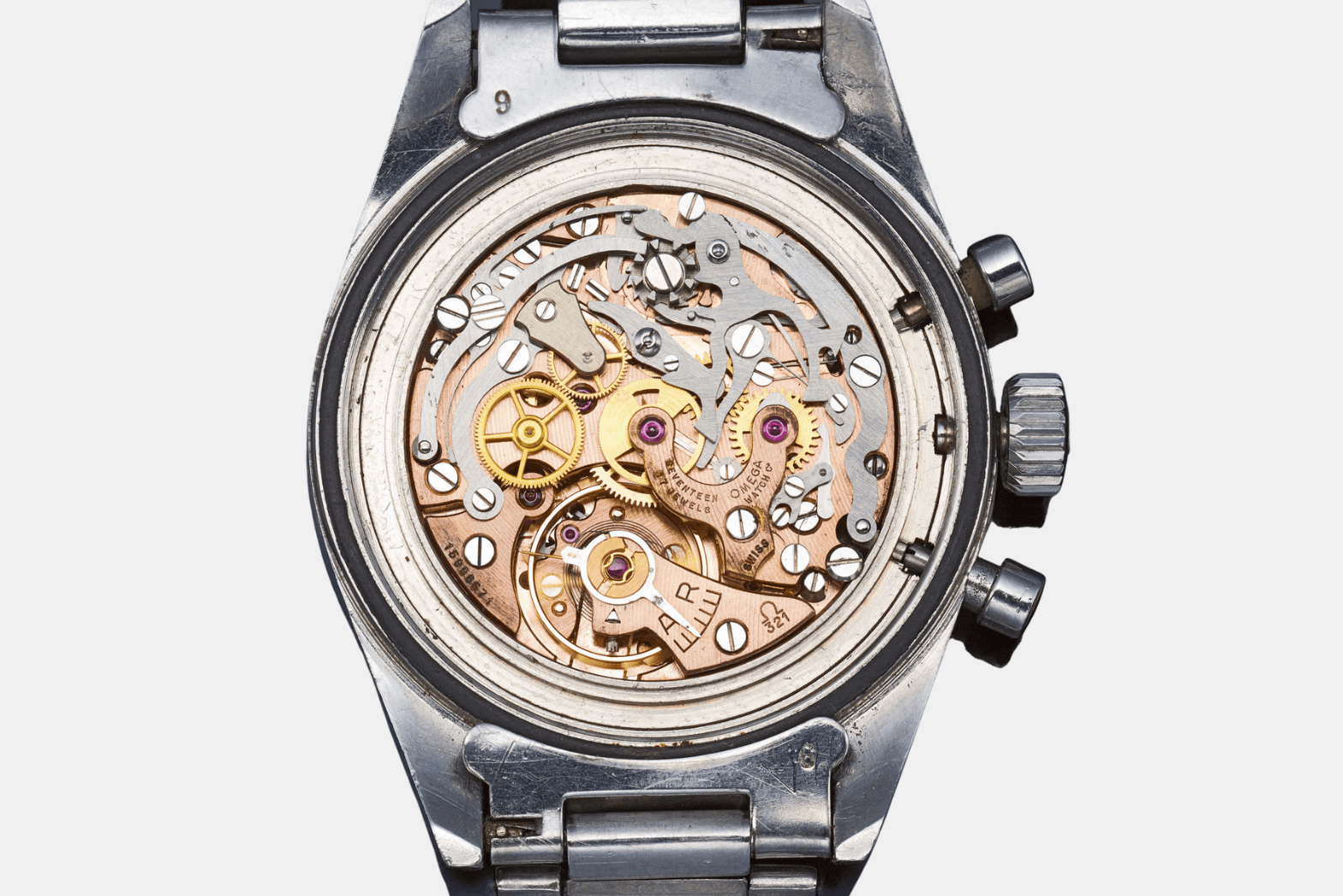
Of course, Omega’s range of modern Broad Arrow-inspired references (the first ‘remake’ arrived in 2015) does not – and indeed, probably shouldn’t – enjoy the same halo of collectability as the original CK2915. Specifically, the: a declaration that can be explained by its brief production window (1957-1959) and consequently, the rarity of certain aesthetic attributes within wider Speedmaster collecting culture. Enthusiasts put a lot of stock in the distinctive hour hand, steel tachymetre and Calibre 321 but in 2021, a CK2915-1 that set the world record for ‘most expensive OMEGA wristwatch sold at auction’ managed this feat thanks to the inclusion of yet another (somewhat novel) element – a tropical dial.
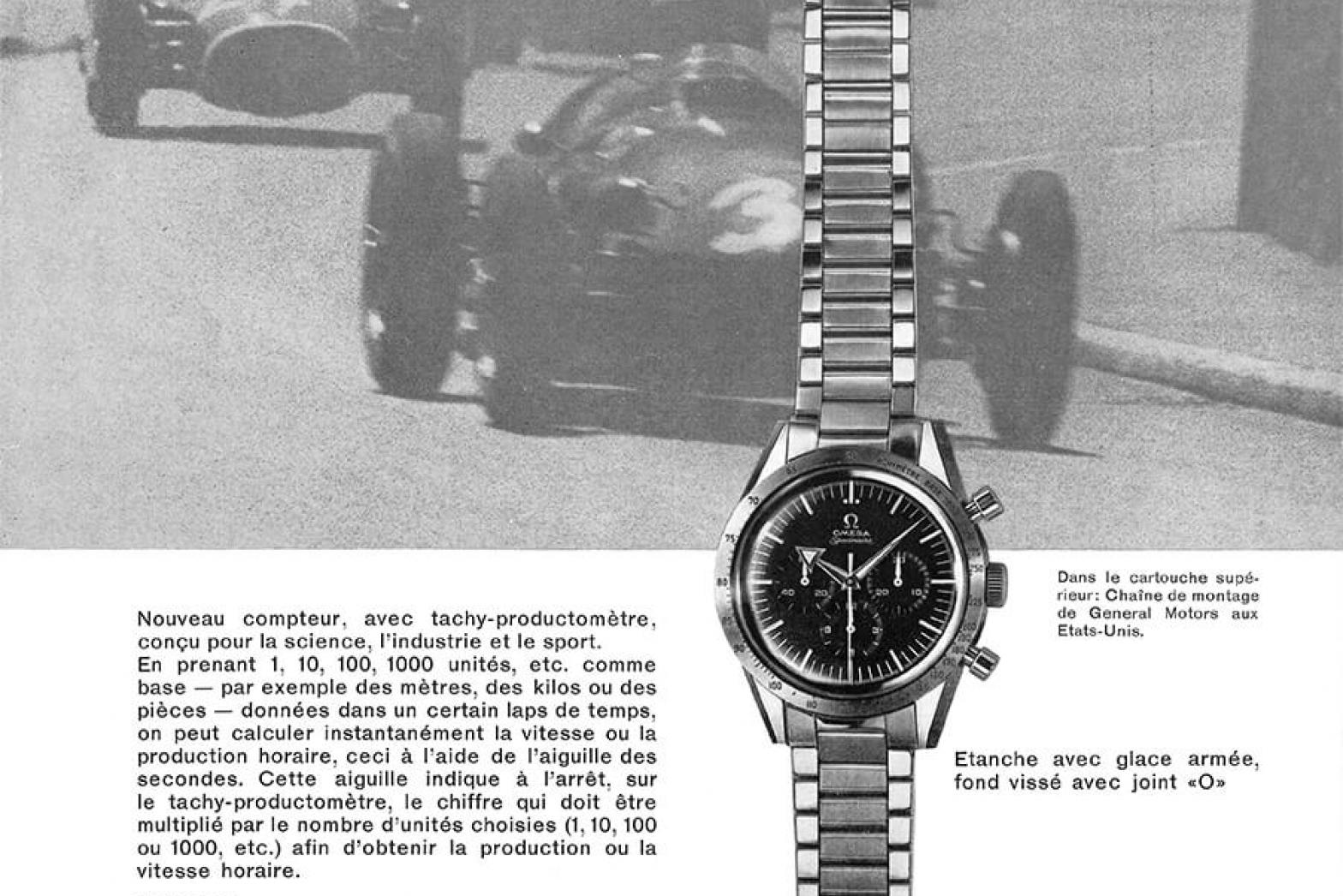
On Earth, As in Heaven
The Speedy’s genesis occurred in an era considered by many to be a renaissance for motorsport-inspired watchmaking, but it wasn’t until it was folded into NASA lore that the ‘Speedmaster’ moniker began to achieve widespread international recognition. Most of the celestially inspired tales – told by both collectors and Omega marketing executives – emphasize the watch’s role in the Apollo missions. The reality is that the Speedy has had a long and varied life in space – one which actually predates the advent of the Moon Landing.
In 1962, astronaut Wally Schirra (one of seven candidates originally chosen to spearhead Project Mercury) orbited Earth for a duration of over 9 hours, accompanied by his own personal example of the Speedy – the Ref. CK2998. Unlike the CK2915, Schirra’s preferred reference was produced for a longer period in more varied configurations. Its lasting contribution to the modern Speedy’s visual identity was the introduction of the aluminium bezel: a detail that is tempered by distinctly vintage elements such as straight lugs and the ‘Alpha’ style hands. Habitually, the ‘Moonwatch’ gets all the credit for being one of the earliest Swiss-made timepieces in space, but if success is measured in accordance with the axiom of ‘first in, best dressed’ then the CK2998 should be as collectible to historically-minded individuals, if not more so.
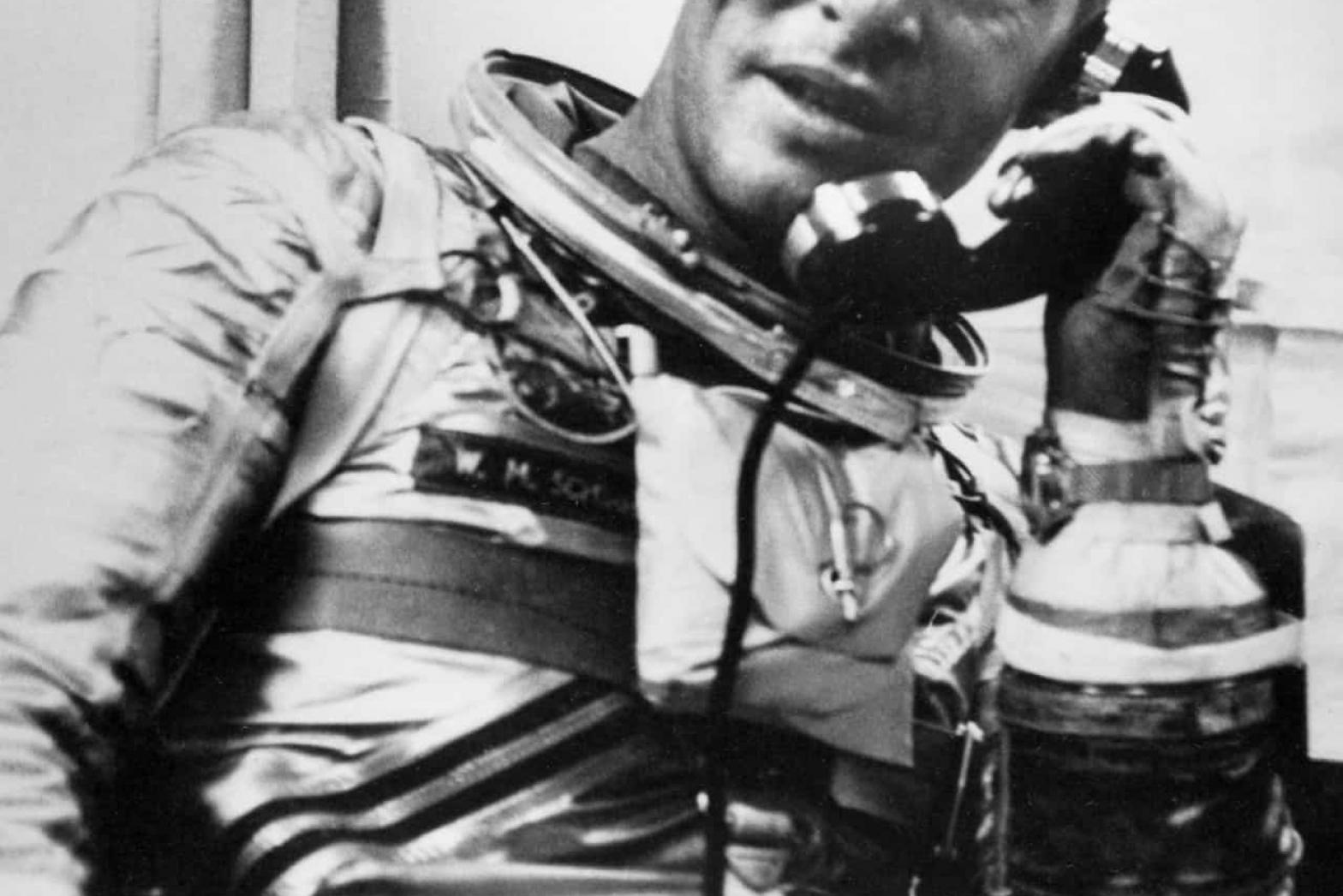
The formative impact of those early Project Mercury missions eventually convinced NASA of the need to sanction an official wristwatch for spaceflight personnel. In 1965 – following a grueling battery of tests that included shock, below-zero temperatures and cycling in near-vacuum – the Speedy emerged as the agency’s preferred instrument, with Omega beating out Breitling, Longines and (most importantly) erstwhile rival Rolex for the contract to supply NASA’s burgeoning astronaut corps.The specific reference that was tested, the Ref. 105.003, introduced another of the modern Speedy’s now-characteristic elements – baton hands. Discontinued in 1966, it paved the way for the transitional Ref. 105.012 – better known to Speedy enthusiasts (and for that matter, almost the entire planet) as the original ‘Moonwatch’.
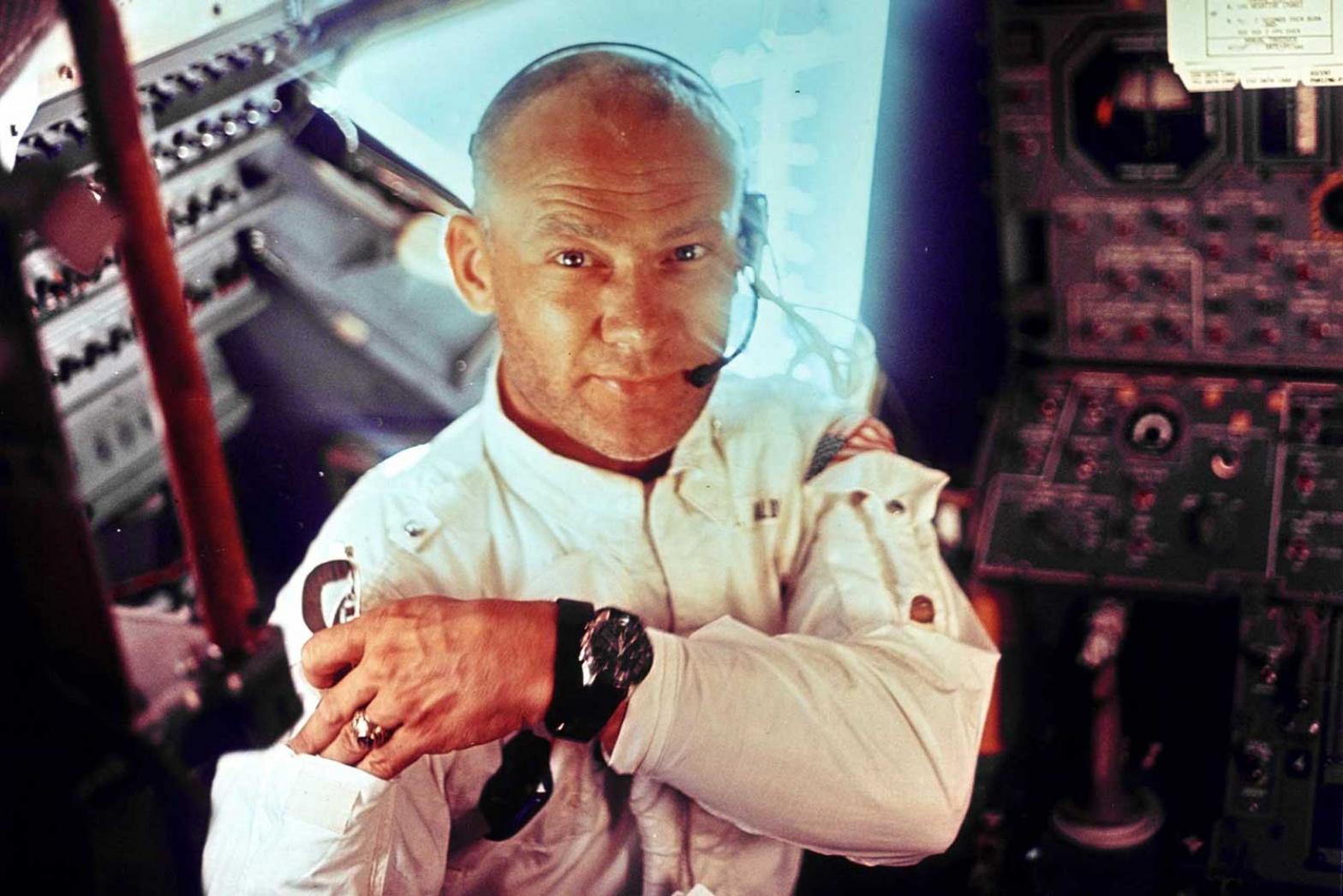
Notwithstanding the original ‘Broad Arrow’ reference, the 105.012 is often touted as the most important Speedy within watch culture. When seasoned Omega collectors utter the term “Moonwatch”, odds are that it’s this particular watch they’re talking about. Immortalized on the wrists of Neil Armstrong and Buzz Aldrin as both stepped across the lunar surface in 1969, the 105.012 can be conceived of as a bookend between the earlier terrestrially-influenced Speedy and the ‘first watch on the Moon’ design that dwarfed it. Previous references had introduced changes of a piecemeal nature, but the arrival of the ‘Moonwatch’ brought with it multiple new design codes – almost all of which we now think of as uncontroversial. The case was reengineered to fit a 42mm diameter; the crown and chronograph push pieces were given added protection; while the lugs were redesigned in the lyre-style – another feature that’s arguably as typical of the Speedy’s look as stick hands or the black inserted bezel.
The 105.012’s proximity to the Apollo 11 mission meant that (at least in popular circles) it overshadowed the Ref. 145.022 – another important, yet near-identical looking Speedmaster variation. Made prior to and simultaneously with the ‘Moonwatch’, the 145.022 differentiated itself largely on a technical basis: fitted with the newer, more industrially scalable Calibre 861 chronograph. “It’s a reference that still has quite a bit to offer,” says Robert-Jan Broer, founder of Fratello and noted Speedmaster collector. According to Broer, in the vast schema of vintage Speedy collecting the 145.022 can still be had for a relatively “affordable” price. “There are a few variations,” he says, “making it an interesting piece for a collector”. “You can go after a pre-Moon landing [or] Post-Moon model, and if so, choose from a couple of different casebacks that Omega used to indicate that this is the watch that went to the Moon.”
The Speedy Today: A Watch for Heroes, Real and Imagined
Even when pitted against a list of the usual iconic chronographs, the Speedy remains a gold standard in aspects of choice and variation. Over the years, the design’s rich heritage has proven to be a reliable launchpad for Omega, who have used it to craft numerous (some might even say “excessive”) special editions, tackling cultural phenomena outside the realm of the Apollo missions. Granted, any exhaustive list of the various modern/neo-vintage riffs on the Speedy – even from just the last 20 years alone – would be massive, so for illustrative purposes we’ve chosen to steer clear of chatter about ‘Moonswatches’, Silver Snoopies or Project Alaska in favor of two broader areas.
The obvious place to commence our discussion is less a reference than an entire geography – Japan. The country has long enjoyed a profound relationship with Omega; benefiting from some extremely covetable one-offs made for its domestic market. Take, for instance, the Ref. 3750.40 – a JDM model released in 2004, inspired by vintage ‘racing dial’ Speedies of the late 1960s. Like the pre-Moon design that inspired it, the ‘Japan Racing’ (as it’s informally called) combines a grey dial; bold orange chronograph hands; and a checkerboard pattern for the rehaut – making it a great means of channelling the vintage Speedmaster aesthetic, whilst exploiting the performance of a modern movement.
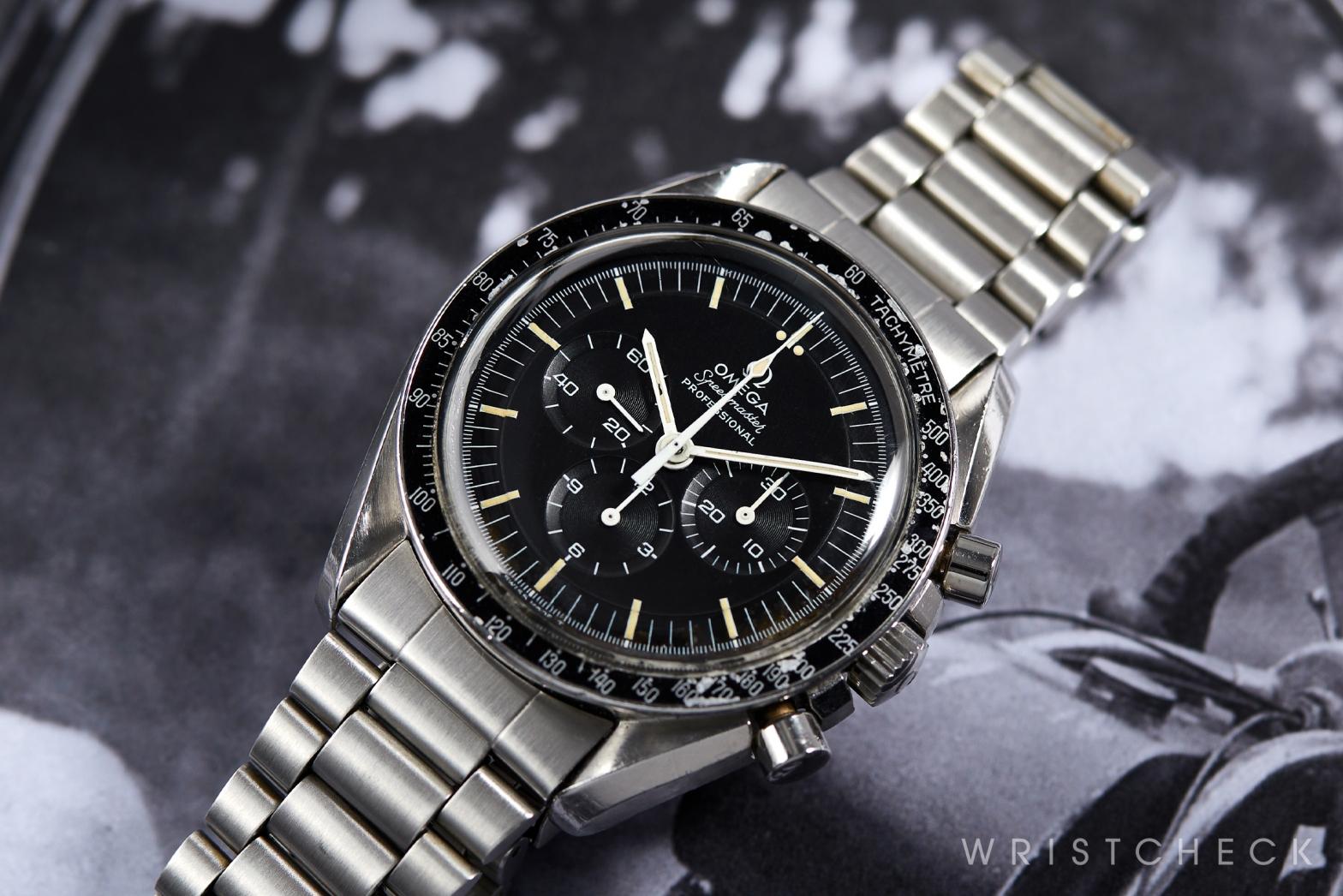
As with most consumer goods, Japanese culture also played a role in shaping the Speedy’s desirability abroad – something that was evident in the reception to the re-release of the ‘Ultraman’. The original examples from 1968 (of which Omega confirms the existence of no more than 50 examples) were, for a long time, a deep-cut collector’s item: in practice, regular Ref. 145.012 Speedies distinguished by the inclusion of an orange chronograph hand and, more importantly, their prominence in the hit TV series Return of Ultraman. The ‘Ultraman’ derived its moniker from the show, making a number of cameo appearances throughout its 1-year runtime. That authentic connection to a formative era in tokusatsu (‘special effects’) and kaiju (‘strange beast’) filmmaking, combined with a mysterious origin – even by today’s standards – made the ‘Ultraman’ a compelling phenomenon in the era of online watch communities; and so, in a now-familiar twist, Omega remade the watch – unveiling it (in 2018) in conjunction with the fans behind #SpeedyTuesday.
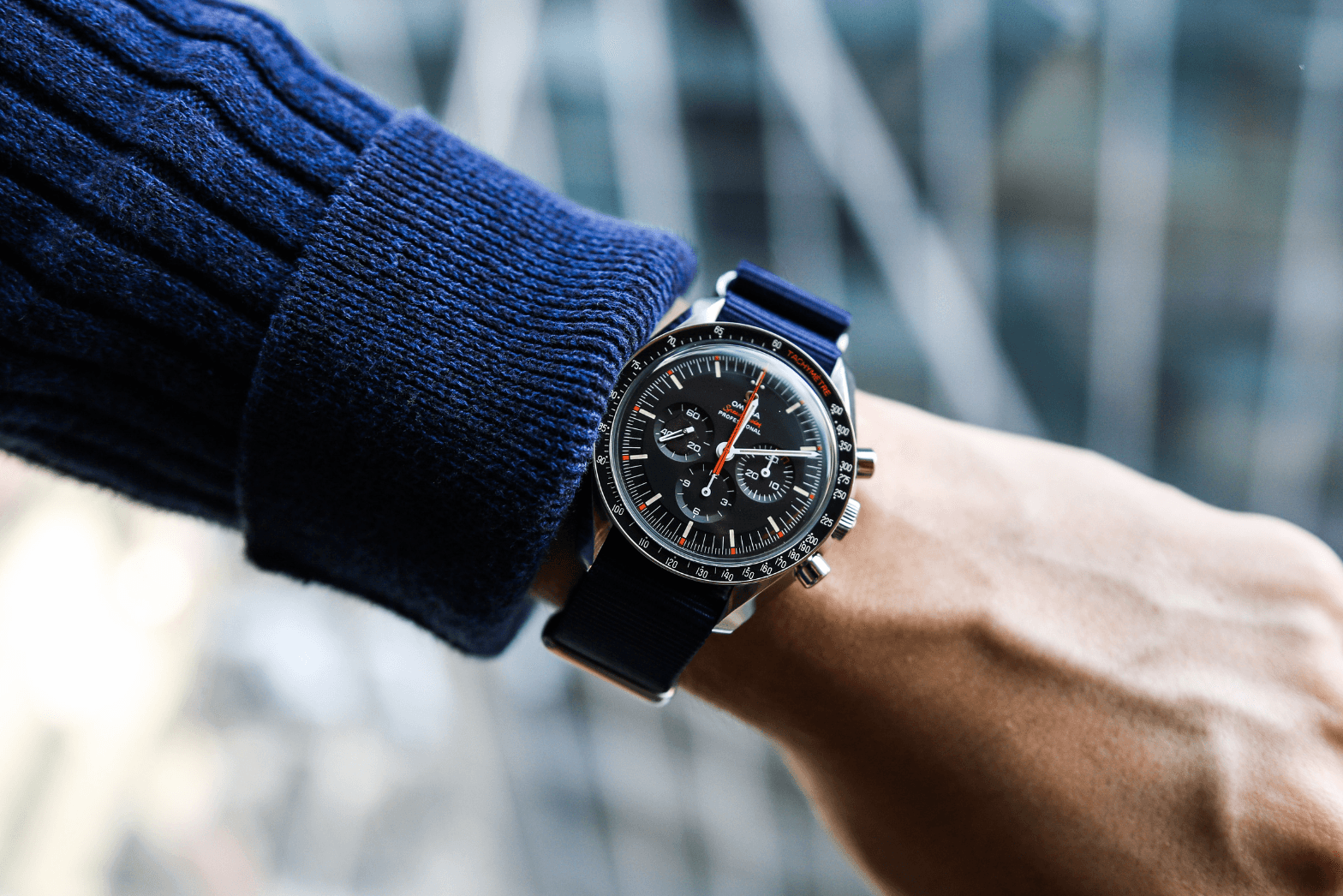
Partnerships with cultural institutions being what they are at Omega (ergo, an institution) it’s surprising that more hasn’t been made of the ‘Olympic’ editions that the brand has produced over the years. To collectors of a certain age, Omega shall be virtually synonymous with the Games: it has been appointed ‘Official Timekeeper’ on 29 separate occasions – a relationship that can be traced back to the 1932 Summer Olympics, when the IOC received 30 of the brand’s rattrapante chronographs. Over the decades, the various professional collections have served as templates for commemorative Olympic-themed watches; with the Speedy being a particularly recurrent favorite, owing to its history as a precision stopwatch. These Olympic Speedies may be broadly separated into those referencing a specific Olympiad or those that pay homage to the Games as a cultural institution. In 2004, some seven decades after it was first invited to time the Summer Olympics, Omega released the ‘Los Angeles 1932’: a Speedy that recalled the historic, white enamel dials of the brand’s first official stopwatches.
Topical novelty aside, these Olympic editions are often a great way to embrace design codes that are associated with rarer, hotly contested references. By way of illustration: to celebrate the most recent edition of the Summer Olympics (Tokyo 2020), Omega released a total of five special edition Speedies – each symbolizing a different colored Olympic ring. While the ‘Red’ and ‘Green’ models were inspired by the modern incongruously decadent Speedmaster Moonphase Co-Axial, the ‘Blue Ring’ shares a number of aesthetic similarities to the 2005 ‘Gemini IV’. Aside from three obvious cosmetic differences – see if you can spot them – the ‘Blue Ring’ Speedy offers enthusiasts some of the big spacewalk-y energy of the Gemini limited edition – the latter now possessing a street value (conservatively) of around US$12,000. This phenomenon itself spotlights why, within the pantheon of iconic chronograph sports watches, the Speedy remains unique: despite its starward heritage, it works perfectly for those whose feet remain planted firmly on the ground.
